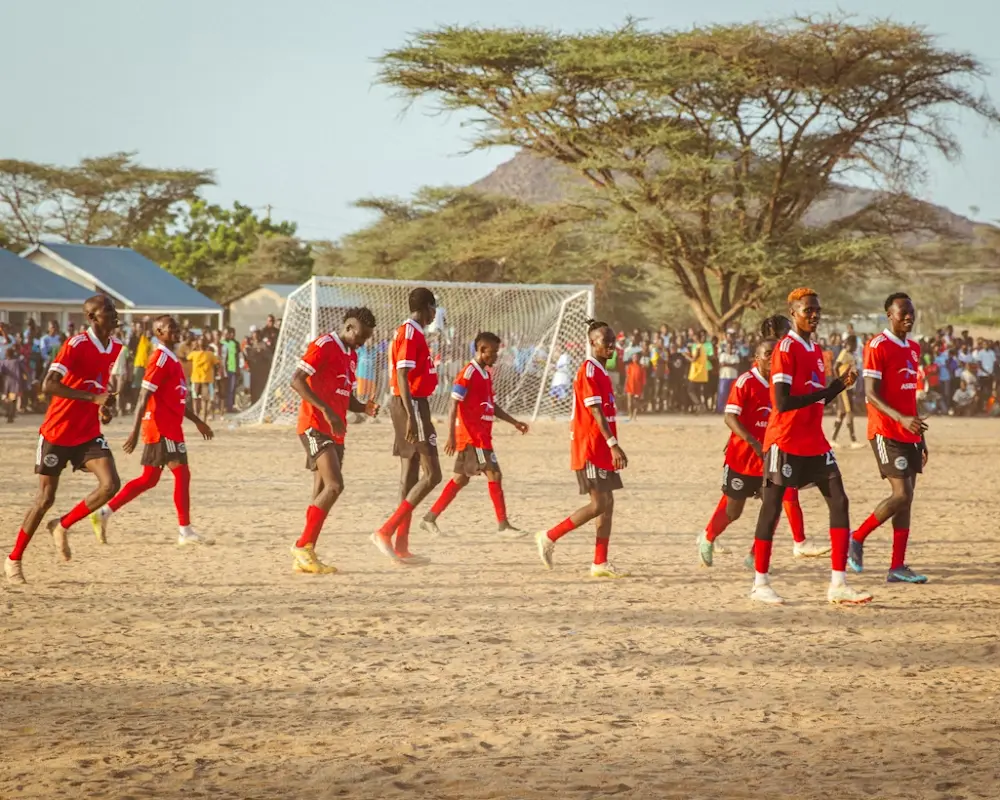
Almost all the world’s famous footballers started in the courtyards, school playgrounds, and tournaments, where the most important thing was not the uniform but passion and character. In Zambia, it’s the same story: football is in full swing in schools and colleges, turning ordinary matches into real battles for respect, team spirit, and dreams. In this article, we will tell you more about how school football is organized in Zambia, who is behind it, and why it means much more than just a game.
Where School Football Comes to Life
School football tournaments are held all year round, from Lusaka to Mongu, from the dusty pitches of Kitwe to those where the grass has long been trampled. Courtyards are transformed into stadiums, students are commentators, and every game is like a final. Old derbies, like Matero Boys vs. Hillcrest, draw crowds where fans cheer as if the World Cup were at stake. And those who have already left school have no time to get bored. Just visit MelBet online — a platform that keeps the pulse of the game — broadcasts, odds, bonuses, statistics — everything is at hand. Fans watch, bet, and discuss as if they were back on the pitch!
How Tournaments Are Set Up and Run
The process of organizing school football tournaments in Zambia follows a pretty structured plan. It usually goes like this:
|
Stage |
Typical Number of Teams |
Common Locations |
Notable Tournaments |
Age Group |
|
School Level |
8–32 |
School fields, town parks |
Inter-School Championships |
U14–U20 |
|
District Qualifiers |
16–24 |
District stadiums |
District Sports Festival |
U15–U20 |
|
Provincial Finals |
10–16 |
Provincial stadiums |
Zambia Schools Sports Assoc. |
U17–U20 |
|
National Finals |
8–12 |
Heroes Stadium, Lusaka |
Copa Coca-Cola, Airtel Rising |
U15–U20 |
|
College Leagues |
6–20 |
University/college pitches |
Zambia Colleges Sports Games |
U18–U23 |
Many events, such as the Copa Coca-Cola Cup, feature more than 1,000 schools nationwide each year. That’s real scale and passion!
Teams, Training, and Student Spirit
Forming sports teams in Zambian schools is not a random story. It all starts with selections: serious, like those of the pros. Coaches carefully watch the students during inter-class matches, looking for future stars. As soon as the lineup is determined, it’s off to the field. Preparation for tournaments begins long before the start of the season, with training sessions up to four times a week.
The support from the students is something special. Every match is a real celebration: drums are pounding, slogans are blaring, and homemade posters are flashing. No one will remain silent there. Sometimes it seems like the whole school has come to the game — and, in general, that’s true. In 2024, for example, Kamwala Secondari brought over 500 fans to the district tournament final. Half the stadium was full of school lads.
Role of Teachers, Coaches, and Volunteers
Teachers play a key role — and not only in the classroom. In school sports, they become mentors, coaches, and coordinators. Many of them once participated in these tournaments themselves, know the inside story, and pass on to students not only the technique but also an understanding of the game. From tactics to discipline — everything goes through them. This is not a formality but real involvement.
Volunteers also play a crucial role — without them, the organization would simply not be able to survive. Among them are often former students, parents, and residents. Some are on duty at the first-aid post, and some keep records or work on the line. For example, at the 2023 provincial tournament final in Lusaka, more than 60 people worked behind the scenes. They are not visible on the scoreboard, but everything rests on them.

What These Games Mean for Young Players
Despite the fact that many consider school football to be something frivolous — like, run around and forget about it — for young players in Zambia it is much more. It is a chance to break out, show yourself, and hold on to the future. And here’s why:
- Scouts and scholarships: The finals do not pass quietly — they come to see who can be taken. At the same Copa Coca-Cola in 2023, more than twenty schoolchildren immediately went to academies. There is a completely different level there.
- Character: Through tough training, losses and struggle on the field, teenagers really grow up. According to a survey in 2024, over 80% of players said that it was football that helped them believe in themselves and taught them to take a punch.
- Road to the pros: About 15% of players in the Zambian Super League once also ran for their schools. Among them is Patson Daka, and this is not a fairy tale for motivation, but a concrete fact.
- General energy: The games are attended in droves – parents, neighbors, classmates. There’s noise, laughter, drama, pride around the field. A real event for the neighborhood.
That’s why these tournaments aren’t the backdrop. They’re the foundation. And if you’re lucky, you can go very far from here. But even if you’re not, the experience that stays is forever.
Big Dreams Often Start on Small Fields
Across Zambia, from suburban schools to college campuses, football pitches are filled with anticipation. Here, the ball is kicked around not for the score, but for the chance. Every shot in the net, every shout from the stands is not just a moment, but a step forward. Dozens of players who started out in such simple matches are now playing on major African arenas and beyond!






